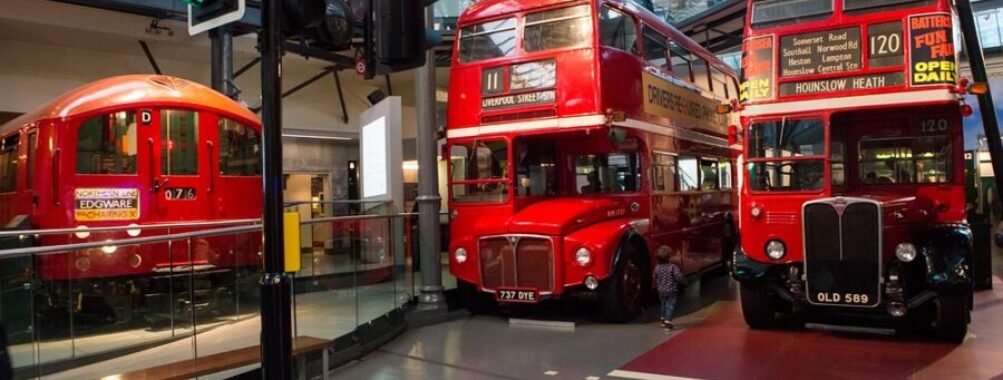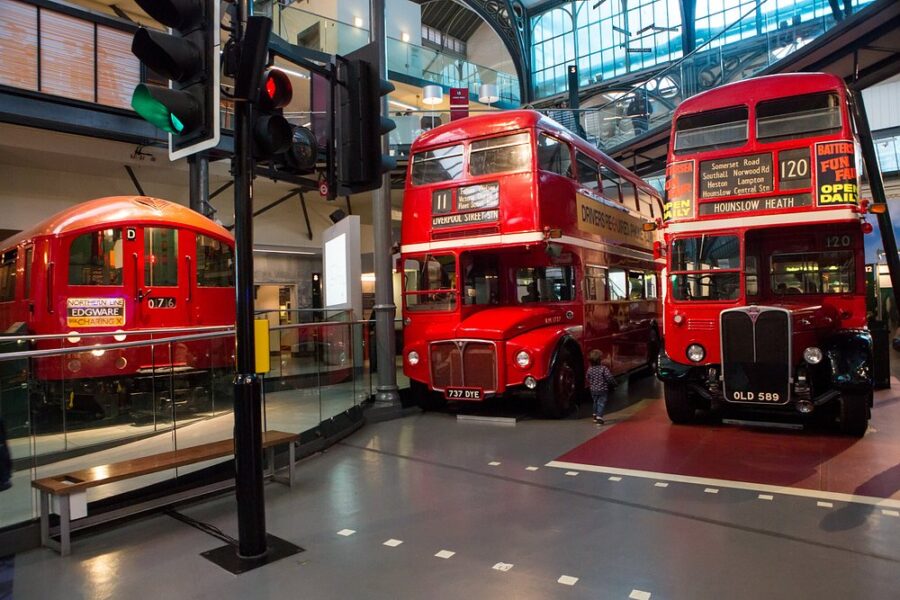
London Transport Museum
Table of Contents
- History and Significance
- Main Attractions and Activities
- Must-See Vehicles
- Interactive Experiences
- Special Exhibits
- Visitor Experience
- Tips for Visitors
- Accessibility and Facilities
- Unique Features
- Overall Impressions
- Pros and Cons
- Location
- Places to Stay Near London Transport Museum
- Find and Book a Tour
- Explore More Travel Guides
History and Significance

When the London Transport Museum first opened in 1980 inside a Victorian flower market in Covent Garden, few predicted it would become one of London’s most beloved institutions. This isn’t just a museum about buses and trains – it’s the beating heart of London’s social history, telling the story of how transport shaped the world’s first underground railway city.
The museum’s collection began haphazardly in the 1920s when far-sighted transport workers started preserving retired vehicles. Today, it safeguards over 500,000 items spanning 200 years, from George Shillibeer’s original 1829 horse bus to futuristic Crossrail designs. More importantly, it captures how transport democratized London – how the “penny fare” brought the city within reach of working classes, and how the iconic Tube map became a symbol of civic pride.
Main Attractions and Activities
Must-See Vehicles
-
Metropolitan Railway Carriage No. 353: The oldest surviving Underground train (1892)
-
1920s “Knifeboard” Bus: Open-top design where conductors balanced precariously
-
1938 Tube Stock: The train that kept London moving during the Blitz
-
Futuristic Gallery: Prototypes for driverless pods and hydrogen buses
Interactive Experiences
-
Tube Simulator: Try “driving” a Jubilee line train (surprisingly stressful)
-
Design Studio: Create your transport posters
-
Signal Cabin: Operate vintage levers to change railway points
-
Family Activities: From storytime on vintage buses to engineering workshops
Special Exhibits
-
“Hidden London”: Disused station secrets and abandoned tunnels
-
“Poster Art”: How transport advertising shaped British design
-
“Women at Work”: Female conductors and engineers through history
Visitor Experience
Step inside the light-filled iron-and-glass hall and you’re immediately transported. The air smells faintly of polished wood, old leather, and that distinctive Tube tang – a nostalgic cocktail for any Londoner. Vintage vehicles stand proudly under dramatic lighting, while the sound of clanging bells and hissing brakes plays subtly through speakers.
The museum masterfully balances education and play:
-
Children clamber aboard antique buses, ringing conductors’ bells
-
Transport nerds scrutinize minute details of locomotive designs
-
Design students sketch from the world’s largest poster collection
-
Older visitors grow misty-eyed seeing trains from their youth
Staff members – many former transport workers – share infectious enthusiasm. Ask about the 1938 Tube train, and you’ll get firsthand accounts of its wartime service during the Blitz.
Tips for Visitors
-
Ticket Hack: Annual passes cost barely more than a single entry
-
Timing: Weekday afternoons are quietest; mornings swarm with school groups
-
Hidden Gem: The lower-level “Depot” stores 370,000 additional items (open select dates)
-
Photography: Encouraged everywhere (flash permitted)
-
Combine Your Visit: Covent Garden’s shops and cafes make perfect complements
-
Special Events: Full-moon “Lates” with cocktails among the exhibits
-
Gift Shop: Don’t miss the iconic design souvenirs (that Tube map umbrella is legendary)
Accessibility and Facilities
The museum excels at inclusive design:
-
Full wheelchair access via lifts to all floors
-
Sensory backpacks are available for neurodiverse visitors
-
British Sign Language multimedia guides
-
Tactile models of key vehicles
-
Quiet hours first Sunday of each month
Amenities impress:
-
Modern cafeteria serving transport-themed treats
-
Spacious family restrooms with changing facilities
-
Free Wi-Fi with digital content enhancements
-
Complimentary buggy park and baby carriers
Unique Features
What sets this museum apart:
-
Rideable Exhibits: Board the most historic vehicles
-
Working Print Shop: Create your vintage-style posters
-
The “Mind the Gap” Collection: 150 years of lost property curiosities
-
Oral History Booths: Hear transport workers’ stories
-
Live Restoration: Watch conservators work on artifacts
Overall Impressions
The London Transport Museum achieves something rare – it makes engineering history feel alive and deeply human. Beyond the impressive machinery, this is a story about people: the navvies who dug tunnels by hand, the “clippies” who kept buses running during wartime, the designers who made the Tube map an icon.
You’ll leave seeing London differently – every bus stop, roundel sign, and escalator will whisper their 200-year backstory. As one visitor remarked: “It’s not about how we move around London, but how London moves us.” The museum’s greatest success? Making you fall in love with transport all over again.
Pros and Cons
Pros
-
Unparalleled collection of working historic vehicles
-
Brilliant interactivity for all ages
-
Central Covent Garden location
-
Annual ticket offers tremendous value
-
World-class accessibility features
Cons
-
It can get overcrowded during holidays
-
Some displays need updating
-
No onsite parking (but great transit links)
-
Gift shop prices are expensive
-
Limited seating in some areas
The London Transport Museum is far more than a niche attraction – it’s a vibrant, moving (literally) testament to how transport built modern London. Whether you’re a hardcore rail enthusiast, a design lover, or just curious how Victorians commuted, this museum delivers delight at every turn.
As the saying goes, “Mind the gap” – in this case, the gap between expecting a stuffy transport exhibit and discovering one of London’s most engaging museums. One visit, and you’ll be hooked – probably while humming a certain jingle about “the underground, overground…”
Location
Places to Stay Near London Transport Museum
Find and Book a Tour
Explore More Travel Guides
No reviews found! Be the first to review!